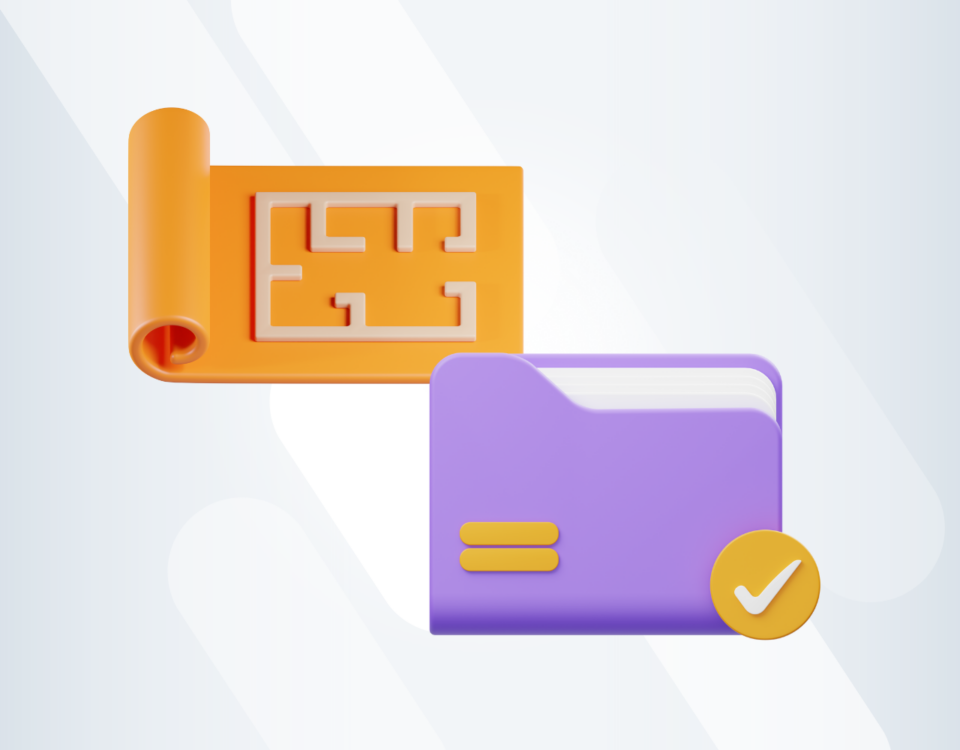Construction Tips, News & Best Practices
How to win at CIS 340 and make taxes a breeze
In this blog, we discuss how construction industry contractors can stay compliant with CIS 340 and ensure they’re paying subcontractors in the right way. If you want to find out the right software to help, check out our recent guide through the best construction job costing tools and software.
CIS 340 is one of those insidious acronyms that causes more than its fair share of stress for construction workers. Simply put, it’s a legal obligation that contractors must follow if they’re working with subcontracted labour. So how do you get it right? Here’s everything you need to know.
TL;DR: What is the construction industry scheme (CIS)
CIS 340 is the HMRC scheme that sets out how contractors should handle payments and taxes to their subcontractors. Here’s an overview of the basic information you need to know:
-
CIS 340 is a legal obligation that all contractors need to register and adhere to if they pay subcontractors.
-
CIS 340 is not relevant for employed labour. In this case, employees should be paid under PAYE in the standard way.
-
Subcontractors themselves can choose whether or not they wish to register. If so, they’ll pay a lower amount of upfront tax on the earnings you pay them.
-
You will need to send a return to HMRC each tax month (ending on the 5th of each month) and a further report to any subcontractors whose earnings are covered by the return.
-
Any payments made during a relevant tax period must be covered by the return.
-
As a contractor, you will need to verify whether specific subcontractors are registered and make relevant deductions based on their status.
If you’re unsure whether or not you have CIS 340 obligations, or if you classify as a contractor, check out the full government guidance. But basically, if you’re a conventional contractor paying subcontractors in the normal way, you almost certainly have to make CIS 340 payments and returns.
How to register for CIS 340
To register for the construction industry scheme (CIS 340), you’ll need to set up as a new employer with HMRC. From there, they will set up a contractor scheme as relevant and tell you what information you need.
You'll need to register before you pay your first subcontractor.
How to complete CIS 340 verification
Before we get into the whys and wherefores of what taxes need paying, you first need to verify whether or not your subcontractors are registered with HMRC. That’s because there are two different rates of deductions:
-
Standard: For registered subcontractors
-
Higher: For non-registered subcontractors
Verification is the process you go through to determine which rate to pay. Luckily, HMRC will do most of the work for you – but you need to let them know.
If you’ve paid a specific contractor anytime in the last two financial years, you do not need to verify them again. That means, for example, if you’re filing a return in June 2023, you can skip verification for any contractors included on returns since April 2021. In these cases, simply apply the same deductions from the last payments, unless HMRC tells you otherwise.
Any other subcontractors will need to be verified with HMRC. There are two main ways you can do this:
-
Use the online HMRC CIS service
-
Use CIS-registered tools like Xero or Quickbooks
To complete the verification, you will need to provide HMRC with information about yourself and the subcontractor, including:
Contractor information
-
Name
-
Unique taxpayer reference (UTR)
-
Accounts office reference
-
Employer reference
Subcontractor information
-
Name
-
Unique taxpayer reference (UTR)
-
National insurance number
-
Name of company (if relevant)
-
Company registration number (if relevant)
You’ll also need to confirm if a contract has been agreed or if a formal tender has been accepted.
Once you’ve completed verification, HMRC will then check whether the subcontractor is registered and specify which deductions you’ll need to make from their payments. They will then assign you a verification number you can use to identify relevant subcontractors in future.
How to apply CIS 340 deductions (National Insurance + Income Tax)
If you’ve completed verification, HMRC should specify which deductions you need to make. Nonetheless, it’s helpful to have an understanding of how deductions work so you can make sure you’re getting it right.
A deduction is a tax that’s taken out of the subcontractor’s earnings and paid to HMRC on their behalf. It’s exactly the same principle as paying taxes for employees under PAYE. These deductions generally include standard income tax and class 4 national insurance contributions.
One important thing to remember: You should not apply deductions to material costs or VAT. Travel expenses or subsistence paid to the subcontractor, however, should be included. Here’s an example to demonstrate how this works:
Let’s say you’re paying John the subcontractor £3,500 for some recent work, and you need to pay travel expenses, material costs and VAT on top of that. Here’s what the final invoice might look like:
-
Labour - £3,500
-
Materials - £1,000
-
Travel expenses - £250
-
VAT - £750
If you've gone through the verification process with HMRC, you should have already been told what rates of income tax and national insurance to apply. For the sake of argument, let’s assume we’re working with a standard income tax rate of 20% and national insurance of 12%.
As discussed, these are not applicable to materials or VAT, but are relevant to labour and travel expenses. The deductions would therefore look like this:
-
Total taxable amount: £3,750 (Labour + travel expenses)
-
20% income tax = £750
-
12% national insurance = £450
-
Total deductions = £1,200
Check out section three of the HMRC guide if you want to find out more about which expenses require deductions. Basically, if it’s a direct project cost (eg materials, plant hire, non-travel related fuel), then they should not be included. If it’s an expense for something that allows the subcontractor to do the job (travel, accommodation, food), then you should apply deductions.
CIS 340 reporting: What you need to know
If you’ve gotten this far, the good news is that the complex bit is behind us. But we’re not quite through the woods yet. As well as verifying and deducting, there’s also some paperwork you’ll need to complete. This includes:
-
A monthly return to HMRC detailing relevant payments and deductions
-
A written statement to every subcontractor – essentially a payslip
Here’s what you need to include:
HMRC return
This return needs to be completed for each relevant tax month, which runs from the 6th of each month to the 5th of the next. It should include:
-
Details of relevant subcontractors being paid
-
Any payments and deductions
-
A declaration of the subcontractor’s employment status (or more importantly, their lack thereof)
-
A declaration that all relevant verifications have been completed
Returns, like verification, can be submitted through the HMRC CIS online service or through relevant CIS-approved software. Find out more about completing a return here.
Statement of deduction
You also need to let the subcontractor know what deductions have been made. This is partially because HMRC says so, but also because it’d be quite rude not to.
The statement must be complete by the 19th of each month. That means for the tax month ending in July (6th June-5th July), the statement should be sent by the 19th of July.
Here’s what information you need to include:
-
Your own name and employer tax reference
-
The final day of the relevant tax month (eg. ‘tax month ending 5th July 2023’)
-
Date of payment (if it’s just a single payment)
-
Subcontractor’s name and UTR
-
The verification number HMRC gave you when verifying
-
Payments, materials, expenses and deductions, as per the previous section
Once you’ve got that sorted, you’ve pretty much got CIS 340 cracked. Nice work.
How to win at construction accounting
CIS 340 can be daunting on the surface. But once you’ve got your head around the details, it’s easier than it first seems. If you want to find out more about how to improve your construction accounting, check out some of our recent guides:
-
How to control project costs with Archdesk in 4 simple steps
-
Construction invoicing 101: Best practices and billing procedures
-
Construction payroll in the United States: The essential guide for contractors
And if you want to discover how Archdesk can help, request a demo today.
FAQs
1. What is CIS 340
The construction industry scheme (CIS 340) is the HMRC framework that contractors have to follow when paying subcontractors. To stay compliant, contractors need to verify their subcontractors, make relevant tax deductions from their payments and file a monthly tax return to HMRC.
2. What is CIS deduction
CIS deductions are taxes taken from subcontractor payments paid directly to HMRC. There are different rates of deductions depending on whether or not the subcontractor is registered with HMRC.
3. How is CIS deduction calculated
CIS deductions are taken at different rates depending on whether the subcontractor is registered with HMRC. To find out what deductions to make, verify your subcontractors with HMRC and they'll specify the relevant taxes and rates.

Danny Mitchell
Head of Content Marketing
You might also like
February 29, 2024 • 7 min read
Utilizing the human-first approach to construction projects to drive higher results.
July 3, 2023 • 6 min read
8 Best Construction Drawing Management Software (2023): A Comprehensive Guide
Find all the information you need about the construction drawing management software tools available on ...June 14, 2023 • 6 min read
The 11 Best PlanGrid Alternatives (2023)
Looking for a great alternative to PlanGrid software? Check out the 11 best construction software tools ...June 6, 2023 • 5 min read
How to keep ahead of construction industry trends
How do you cut out the noise and focus on what really matters? In our ...





